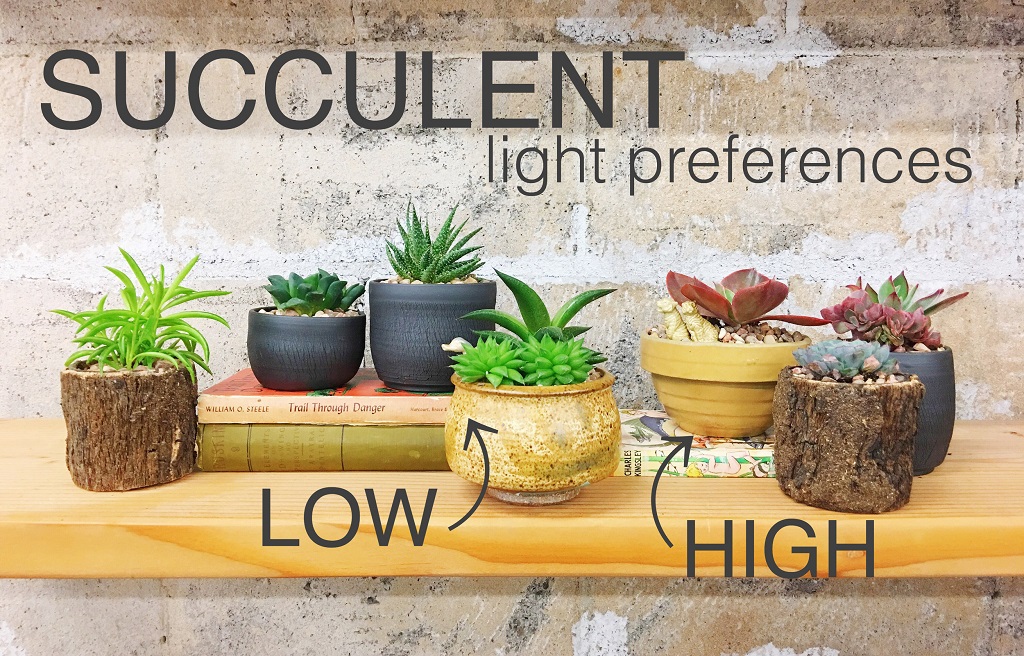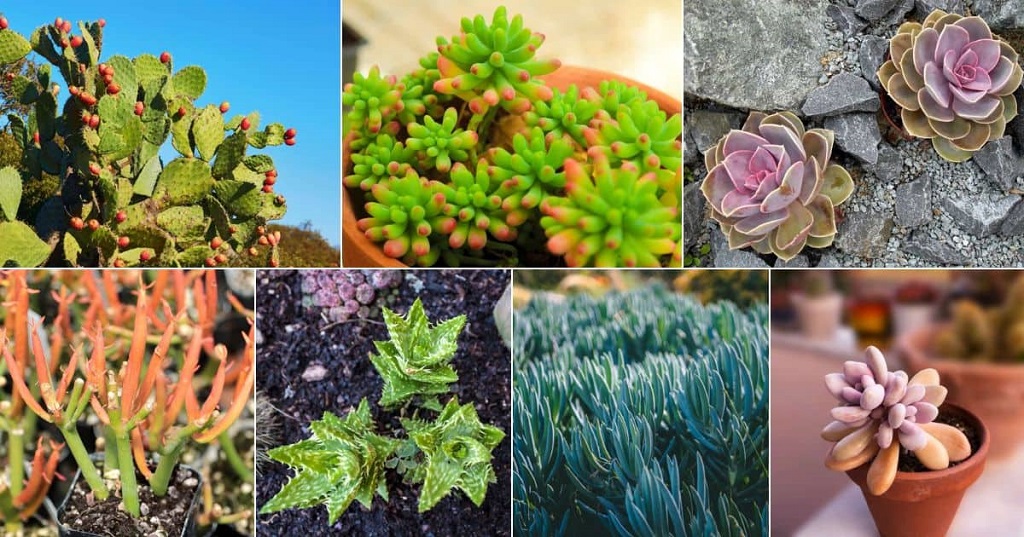
17 Aug Do Succulent Flowers Need Sunlight?
Succulent plants are known for their ability to thrive in dry and arid environments, making them a popular choice for many gardeners and plant enthusiasts. One common question that arises when it comes to succulent care is whether their flowers require sunlight to grow and bloom successfully. In this article, we will explore the importance of sunlight for succulent flowers, how much sunlight they need, and the potential consequences of insufficient or excessive exposure. So, let’s dive in and uncover the secrets to nurturing blooming succulent flowers!
The Role of Sunlight in Succulent Flower Growth
Sunlight is essential for the growth and overall health of plants, including succulents. Succulents, by nature, have adapted to survive in harsh environments with limited water availability, and sunlight plays a crucial role in their survival strategy. Some succulent species even produce beautiful succulent yellow flowers, which is a testament to their resilience and adaptability.
When it comes to flowering, succulents need an appropriate amount of sunlight to stimulate the metabolic processes that trigger flower development. Sunlight provides the energy necessary for photosynthesis, which in turn fuels growth and the flowering processes. Additionally, sunlight influences the plant’s hormones and photoperiodic responses—important in regulating the timing and duration of flowering. Wondering about nature? What does stickers in the grass mean?
How Much Sunlight Do Succulent Flowers Need?
While succulents are known for their ability to tolerate sun-drenched conditions, the amount of sunlight they need can vary depending on the species. Below, we explore three general categories of succulents and their sunlight requirements:
Full Sun Succulents
Some succulents, such as Sedum, Echeveria, and Agave, thrive in full sun and require at least six hours of direct sunlight each day. These succulents have evolved to withstand intense sunlight and have adaptations like thick waxy leaves or spines that help protect them from excessive water loss. Full sun succulents often produce vibrant flowers when provided with ample sunlight.
Partial Sun Succulents
Many succulents fall into the category of partial sun plants, meaning they prefer a mix of direct sunlight and filtered shade. Examples of partial sun succulents include Aloe vera, Haworthia, and Gasteria. These plants can tolerate several hours of direct sunlight but may require protection from intense midday sun or scorching temperatures. A balance of sunlight and shade helps prevent sunburn and allows the plants to thrive.
Low Light Succulents
Some succulents, such as Sansevieria and Zamioculcas zamiifolia (ZZ plant), can tolerate low light conditions and are considered low light succulents. These plants can survive with indirect or artificial light, making them suitable for indoor environments or areas with limited sunlight. While low light succulents may not produce as many flowers compared to their sun-loving counterparts, they can still thrive and add greenery to spaces with minimal natural light.
Consequences of Insufficient Sunlight for Succulent Flowers
Insufficient sunlight can have adverse effects on succulent flowers and their overall growth. Here are some potential consequences of not providing enough sunlight:
Insufficient Flowering
Succulents that do not receive an adequate amount of sunlight may produce fewer or no flowers at all. This is because the energy needed for flower formation and development is derived from sunlight through the process of photosynthesis. Without enough sunlight, the plant’s energy reserves may be insufficient to support flower production.
Leggy Growth and Weak Stems
When succulents do not receive enough sunlight, they may exhibit leggy growth, characterized by elongated stems and stretched-out leaves. This leggy growth is an adaptive response as the plant stretches to reach for more sunlight. However, this growth pattern can result in weak and fragile stems that are more prone to breakage or damage.
Loss of Color and Vibrancy
Sunlight contributes to the pigmentation and coloration of succulent flowers. Insufficient sunlight can cause the flowers to appear faded or pale, lacking the vibrant hues that they normally exhibit under optimal lighting conditions.
Overall Plant Weakness
Succulents that do not receive enough sunlight may become weak and susceptible to disease or pest infestations. Proper sunlight exposure strengthens the plant’s immune system and promotes overall vigor, making it better able to fend off potential threats.
Consequences of Excessive Sunlight for Succulent Flowers
While sunlight is crucial for succulent flower growth, excessive sunlight can also have detrimental effects. Here are some potential consequences of too much sunlight:
Sunburn
Just like humans, succulent plants can get sunburned. Too much direct sunlight, especially during the hot afternoon hours, can cause sunburn on the leaves and flowers of succulents. Sunburn appears as brown or yellow patches on the plant’s surface and can lead to irreversible damage.
Heat Stress
Excessive sunlight exposure can subject succulent flowers to heat stress, especially in regions with scorching temperatures. Heat stress can result in wilting, leaf discoloration, and stunted growth. Prolonged exposure to extreme heat can even lead to the death of the plant.
Accelerated Water Loss
Intense sunlight can increase the rate of water evaporation from succulent leaves, leading to dehydration and moisture imbalance. This excessive water loss can strain the plant’s ability to retain sufficient water, potentially causing wilting, shriveling, or even death.
Leaf Scorch
Leaf scorch is another consequence of excessive sunlight. It occurs when the plant’s tissues are subjected to extreme heat, causing them to dry out and turn brown or yellow. Succulents with thinner leaves, such as Sedum adolphi or Sedum makinoi, are particularly susceptible to leaf scorch.
Best Practices for Providing Sunlight to Succulent Flowers
To ensure optimal sunlight exposure for your succulent flowers, here are some best practices to keep in mind:
Observe the Sunlight Patterns
Observe the sunlight patterns in your environment and determine the sunniest spots. Different locations may experience varying degrees of sunlight intensity and duration throughout the day. Understanding these patterns will help you identify the best spots for your succulent plants based on their sunlight requirements.
Gradually Introduce Sunlight
If you are transitioning your succulent plants from a low light indoor environment to a sunnier outdoor location, it is essential to acclimatize them gradually. Exposure to sudden intense sunlight can shock and damage the plants. Start with short periods of sunlight exposure and gradually increase the duration over several days or weeks.
Provide Shade During Intense Sunlight Hours
During the hottest hours of the day, typically between 10 am to 4 pm, provide shade for succulents that cannot tolerate full sun. This can be achieved by placing the plants under a shade cloth, patio umbrella, or in areas with natural shade, such as under a tree canopy.
Protect from Extreme Heat
Succulents can be vulnerable to extreme heat, especially in areas with high temperatures or during heatwaves. Shield the plants from excessive heat by providing additional shade or relocating them to a cooler area when needed.
Monitor Soil Moisture Levels
Proper watering is crucial for succulent plants, and sunlight exposure affects their water needs. Increased sunlight can lead to faster evaporation and higher water requirements. Monitor the moisture levels of the soil and adjust your watering schedule accordingly to prevent under or overwatering.
Rotate Plants for Balanced Growth
To ensure balanced growth and prevent the succulent from leaning towards the light source, periodically rotate the plants. This will promote even exposure to sunlight and encourage symmetrical growth.
Frequently Asked Questions (FAQs)
Here are some commonly asked questions about succulent flowers and sunlight:
Q1: Can succulent flowers survive without any sunlight?
No, succulent flowers cannot survive without any sunlight. Sunlight is crucial for their growth, photosynthesis, and flower development. However, the amount of sunlight required can vary depending on the species.
Q2: Can indoor succulent flowers bloom without direct sunlight?
Yes, some indoor succulent flowers can bloom without direct sunlight. However, they still require a sufficient amount of bright, indirect light to grow and flower successfully. Consider placing them near a south or west-facing window to provide adequate light.
Q3: Can I use artificial light to supplement sunlight for succulent flowers?
Yes, artificial light can be used to supplement sunlight for succulent flowers, especially when growing them indoors. Full-spectrum grow lights or specific LED lights designed for plants can provide the necessary light spectrum for photosynthesis and flower development.
Q4: Can succulent flowers be damaged by too much sunlight during summer?
Yes, succulent flowers can be damaged by excessive sunlight during the summer months. Intense heat and direct sunlight can lead to sunburn, heat stress, and accelerated water loss. Providing shade or moving the plants to a cooler location can help protect them during this time.
Q5: Can I grow succulent flowers in shady areas?
While some succulent species can tolerate shade or low light conditions, most succulents prefer bright, indirect light or partial sun. Inadequate light can result in leggy growth and reduced flowering. It is essential to choose shade-tolerant succulents if you plan to grow them in shady areas.
In Conclusion
Succulent flowers, like other parts of the succulent plant, require appropriate sunlight for their growth, development, and blooming. The amount of sunlight needed varies depending on the species, with some succulents thriving in full sun, others in partial sun, and some even in low light conditions. While insufficient sunlight can hinder flower production and overall growth, excessive sunlight can lead to sunburn, heat stress, and other issues. By understanding the sunlight requirements of your succulent flowers and implementing best practices for providing sunlight, you can create an environment where they can flourish and showcase their vibrant blooms. Remember to monitor the sunlight patterns, gradually introduce sunlight, provide shade when necessary, and maintain proper watering practices. With the right balance of sunlight, your succulent flowers will reward you with their stunning beauty and captivating colors.


No Comments